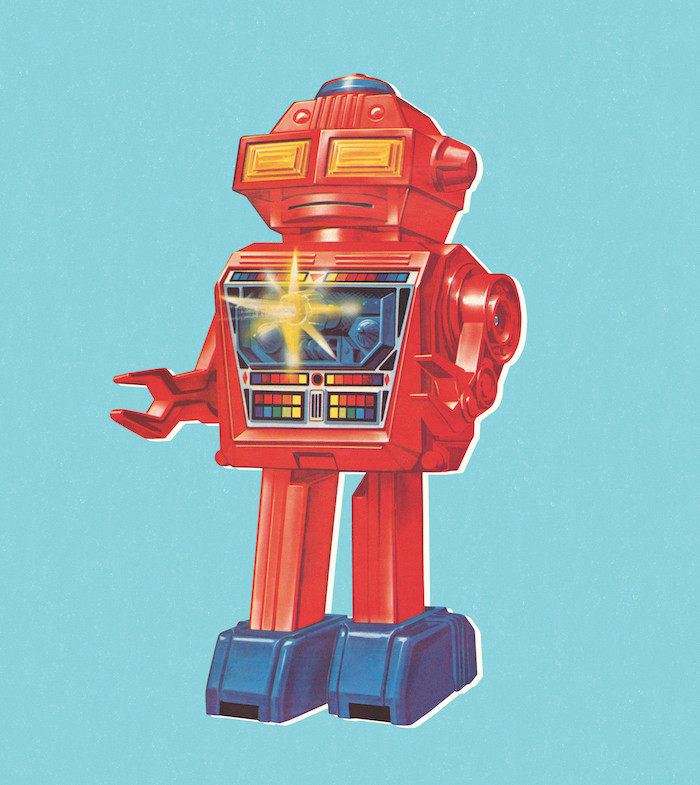
Prof Charles Spence says that if consistency of serve is the aim, robot cocktail makers could be the future. But isn't there an argument for tasting the hand of the maker?
Just how worried should bartenders be by the emergence of the robot cocktail maker? Take, for instance, Makr Shakr, which was installed on the Royal Caribbean’s cruise ship, The Quantum of the Seas, back in 2014. The technology involved allows the guests to order via tablet. What’s more, when operating at full steam (as it were), Makr Shakr can mix and serve somewhere in the region of 120 cocktails an hour (that’s two a minute), all without needing to take a break. One of Makr Shakr’s unique selling points is that it delivers a perfectly consistent serve every time.
Makr Shakr has competition, though, from an $82,000 robot bartender that was installed in a small pub in Tokyo in 2020. The robot in question, built by QBIT Robotics, can pour a beer in 40 seconds while turning out a cocktail in one minute. According to a report that appeared in Reuters, the robot bartender was installed for a three-month trial period before its success would be assessed (though I haven’t been able to find any further coverage). What is certain is that, given the price is equivalent to paying a human bartender for three years, staff shortages will presumably have to become a lot more severe before such an investment in technology starts to make financial sense.
The precision creation of a drink undoubtedly has its place in the world of bartending. Think here only of Ryan Chetiyawardana, the man behind White Lyan, among others, which lauched some 10 years ago. Bar manager Robin Honhold explained at the time: “At White Lyan there is not a perishable in sight – no corkscrews of lemon zest, no lime wedges, no ice. This allows the server absolute control, and guarantees consistency every time you order.”
One of the things that is missing when a robot bartender, or presumably my colleague Mr Lyan, makes a drink relates to what Tim Hayward, writing in The Financial Times a decade ago, called ‘the cult of inconsistency’. His point is that perfect consistency every time (part of what Makr Shakr supposedly offers, and what Mr Lyan strives for with the drinks served in his bars), isn’t really what people want from a craft/artisanal product. Rather, when I go out to eat or drink an artisanal, or handcrafted, product, I want to feel the hand of the maker. I don’t want to be presented with a perfectly consistent, factory-made ready-meal or drink, one that has come straight off the production line somewhere. It is the subtle variation from one drink to the next that gives us that feeling of having been touched by the maker’s (ie artisan’s) hand. Otherwise, why not simply buy a pre-made cocktail? The latter, after all, allows for greater consistency, especially when adding tiny amounts of some of the most flavourful ingredient which can be tricky to achieve on a drink-by-drink basis.
Perceived naturalness
Furthermore, even imagined human contact during the making process has been shown to increase perceived naturalness of a drink. In one study, researchers compared people’s ratings of grape juice after having been told that the product was machine-made versus handmade (in the latter case, participants were told that the grapes had been hand harvested and sorted, pressed, strained and bottled manually).
There is also the phenomenon of the ‘handmade effect’, whereby handmade products are valued more highly. However, should automation be the only solution – an increasingly likely situation given the continuing problem of staff recruitment and retention – then it may be worth choosing a model with human-like hands. This suggestion is based on the latest research showing that such anthropomorphic features convey a benefit in terms of the perceived quality of the food that the humanoid robot prepares. In fact, people generally predict that the food they believe has been prepared by a robot will be of lower quality than the same food prepared by a human.
Service robots that either show people to their table or deliver the customers’ order once seated are becoming more popular in parts of Asia. That being said, my guess is that in the longer term, it will be the commensal robots that can provide some form of social companionship to those who might otherwise be drinking, or dining, alone that will see the biggest growth in the marketplace for robots in hospitality, not the robot chefs, bartenders, or food tasters. After all, it is the social aspects of bartending that are probably more important in the long term than delivering exactly the same serve, time after time.


